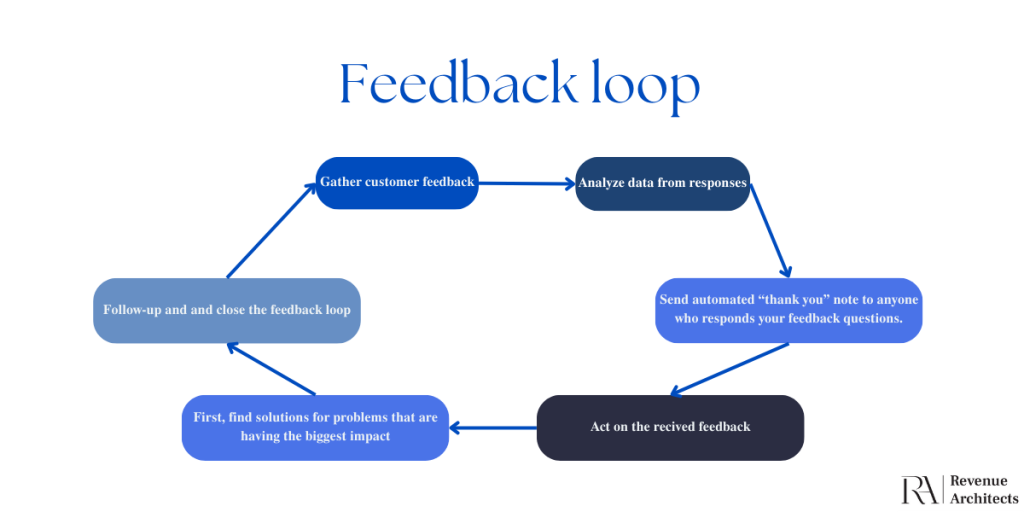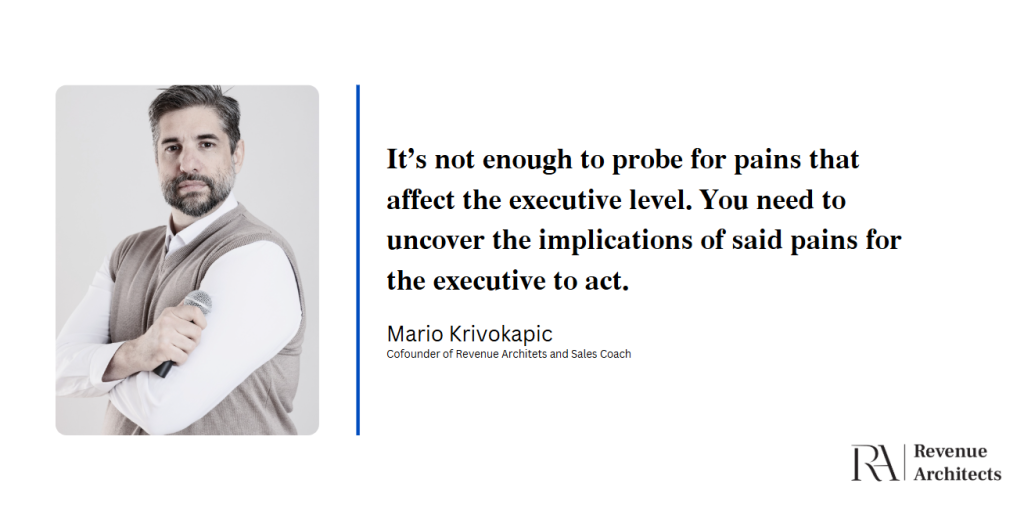What is an executive engagement?
Executive engagement is about creating meaningful conversations and building relationships with senior decision-makers—your most important clients and prospects. But let’s be clear: this isn’t just a quick coffee chat or a surface-level LinkedIn message.
An executive engagement strategy is a thoughtful, precise approach to connecting with leaders who sit at the top of the corporate ladder. These are people who don’t just make decisions; they shape the future of their organizations. And to get their attention, let alone their trust, you need to bring real value to the table.
It’s about:
- Understanding their priorities—What’s keeping them up at night?
- Speaking their language—Insights, not fluff. Solutions, not sales pitches.
- Respecting their time—Every touchpoint needs to be worth their while.
Think of it like navigating a high-stakes game of chess: every move you make—whether it’s an email, a meeting, or a piece of insight—needs to be calculated, relevant, and intentional. When done right, executive engagement doesn’t just open doors; it creates partnerships that drive results and revenue.

What Are the 3 Levels of Executive Engagement Strategy?
At its core, an executive engagement strategy is built on a series of deliberate, intentional steps that, when executed well, can transform fleeting interactions into long-lasting partnerships. The strategy isn’t a cookie-cutter formula but rather a customized blueprint that considers each organization’s nuances and its leadership’s specific needs.
1. Research and Understanding: Before engaging, you need to do your homework. This involves a deep dive into the organization, its challenges, opportunities, and goals. Knowing the decision-makers is critical, but understanding the pressures they face is what will set you apart.
2. Crafting the Right Message: It’s about something other than what you want to say but what the executive needs to hear. Your message must be relevant, timely, and aligned with their business priorities. Executives are inundated with information, so cutting through the clutter is paramount.
3. Timely and Consistent Follow-up: Once the conversation begins, maintaining momentum is crucial. A successful engagement doesn’t end with the first meeting—it’s nurtured through consistent, thoughtful follow-ups that add value every step of the way.
An excellent executive engagement strategy is about creating a roadmap that leads to a two-way relationship grounded in value. It’s not transactional but relational. Each step should serve as a building block toward establishing trust and aligning your offerings with their critical business needs.
Find Decision-Makers
Finding the right decision-makers within a company is the equivalent of unlocking the vault to success. But this is no treasure map with an “X” conveniently marking the spot. In today’s interconnected corporate ecosystems, the decision-making process often involves multiple stakeholders, with influence radiating from the executive suite outward. Your mission? Identifying the person who signs off on decisions and those in their orbit who help shape those decisions is essential.
The search begins with identifying the power players. The key individuals in the C-suite and upper management sway over budgets and strategic initiatives. But don’t stop at just their titles. Understanding their professional background, role in the company’s decision-making hierarchy, and personal business objectives will give you a leg up when it comes to engaging them effectively.
Yet, in today’s collaborative environment, influence often transcends job titles. Decision-makers are rarely isolated figures making unilateral choices. They rely on input from teams, advisors, and even external consultants. Recognizing these “hidden influencers” who may not have the final say but help shape the final decision is vital. Their voices matter, and their opinions often tip the scales one way or another.

Using data and technology—from LinkedIn to CRM tools—helps you map the decision-making landscape. These platforms allow you to track connections, monitor organizational changes, and identify influence patterns. With this intelligence, your engagement strategy becomes less of a guessing game and more of a precise, calculated initiative.
One of our favorite tools is Appolo.ai which served us well many times, as it can show more than LinkedIn, and it can be magical when it comes to finding out who is decision maker.
Listen to Their Needs
Ah, the art of listening—a simple act often touted but rarely mastered. Executives have no patience for fluff. They’re problem solvers by trade, constantly sifting through volumes of data and countless meetings to find the signal amid the noise. When you approach them, it’s not your pitch they’re interested in; it’s the solution you bring to their problems. But how do you uncover those problems? You listen.
In any executive engagement strategy, listening is your secret weapon. From the first touchpoint, capturing and digesting everything the executive says explicitly and between the lines is essential. Think about these questions:
- What are their business objectives?
- What keeps them up at night?
- What changes in the industry are they most concerned about?
- What is going on on a global scale that can make changes in their industry?
Sometimes, not what they say but how they say it gives you the real insight.
Too often, salespeople leap into a conversation with a pre-packaged pitch, assuming they know what the executive needs. This is the surest way to lose them. Executives crave tailored solutions to specific problems; the only way to deliver that is by listening first. This requires a shift in mindset—from selling to solving. You’re not there to push a product or service but to provide a solution that meets their business needs. But those needs? They’re buried in the conversation.
Asking the right questions is just as critical. Don’t ask superficial questions that will give you predictable, surface-level answers. Instead, ask thoughtful, open-ended questions that allow the executives to express their pain points in their own words. Once they’ve opened up, you’ll have the raw material needed to craft an insightful and aligned response to their needs.
Listening may seem passive, but it’s an active part of any successful engagement strategy. It’s where you gather the insights that allow you to pivot from merely talking to delivering a solution.
Engage With Them Through Specialized Events
Meeting top executives holds a unique charm, almost like just being in the same room could create exciting opportunities. However, truly connecting with executives at events is an art that requires a thoughtful approach. It goes beyond mere handshakes at conferences or casual chatter over snacks. Specialized events—like industry conferences, private roundtables, or tailored gatherings—present wonderful chances for meaningful engagement, but it’s essential to handle them with intention and care.

Why specialized events? Because executives are constantly bombarded with invitations to webinars, dinners, and keynote speeches. To engage them, you must stand out by offering an experience tailored to their world—one where they see value beyond a generic networking opportunity.
Events designed around exclusive, high-level content, where discussions are driven by their pressing concerns, will grab their attention, and you can meet them there.
Be Prepared
The trick is in the preparation. Before the event, do your homework. Understand who’s attending, what’s on the agenda, and most importantly, what the executive wants. Your goal is not just to attend but to make every interaction count. Whether hosting a panel discussion, arranging a one-on-one meeting, or facilitating a peer-to-peer conversation, your engagement must be personalized and focused.
During the event, keep the conversation about them. Executives aren’t interested in your product features; they want to discuss trends, challenges, and solutions relevant to their industry. Events give you a unique platform to connect the dots between their needs and your solutions in a natural, non-sales way. The best events for executive engagement are those where the executive walks away feeling like they gained something—insight, connections, or a new perspective on a challenge they’re facing.
Ultimately, specialized events offer a platform for deeper, more meaningful engagement. It’s not about networking; it’s about aligning your solutions with their business challenges in a way that feels organic and valuable.
Make Every Minute of Their Time Worth It
Executives are, in many ways, the custodians of time. They don’t have the luxury of endless meetings or casual calls. Every minute they spend is a minute not spent on another priority. So, when you capture a sliver of their day, you’d better make it count.
In crafting an executive engagement strategy, efficiency is everything. There should be no fluff from the moment you get in front of them—whether in person, on a call, or even over email. The first few seconds are critical. It’s your job to convey why this conversation matters immediately. What’s in it for them? Why should they give you their time? And most importantly, how will you solve a problem they care about?
Every interaction should be laser-focused on delivering value. This doesn’t mean drowning them in information but providing relevant insights that address their most pressing business challenges. Tailor your message to reflect their specific goals and pressures. Rather than talking about what your product does, talk about how it aligns with their strategic initiatives.
Who Should Create This Strategy?
When crafting an executive engagement strategy, the question of who should be responsible is as crucial as the strategy itself. While the immediate assumption might be that this falls solely on the shoulders of sales or marketing teams, the reality is much more nuanced. A successful executive engagement strategy requires input and collaboration across several organizational departments.
At the helm, the sales leadership—usually the VP of Sales or Chief Revenue Officer—should guide the process. Their understanding of the company’s overarching sales goals and long-term strategies makes them well-suited to orchestrate the engagement. However, they cannot do it alone. Marketing teams, particularly those focused on account-based marketing (ABM) or demand generation, play a pivotal role in creating the collateral and campaigns that resonate with executives. They understand the power of messaging and branding, ensuring that every interaction reinforces the value proposition.
What About Customer Success?
Additionally, the customer success and product teams bring invaluable insights into how the company’s offerings can solve specific pain points for executives. They understand the intricacies of the product, service, or solution being pitched and can highlight features and benefits that will be most relevant to the C-suite.
Lastly, a growing trend in many companies is including a dedicated executive engagement manager—someone whose role is specifically designed to foster these high-level relationships. This individual acts as a liaison between the company and the executive suite, ensuring that engagements are strategic but also consistent and personalized.
In essence, the best executive engagement strategies are created through cross-functional collaboration. The more perspectives involved, the more comprehensive and compelling the strategy becomes, ensuring it caters to the unique needs of the target executive audience.
How to Make an Internal Engagement Strategy?
While external executive engagement strategies aim to connect with leaders outside your organization, an internal engagement strategy is essential for driving business growth and alignment. Think of it as the glue that binds leadership and employees together to pursue shared goals. But how do you create an internal strategy that ensures all executives and teams are aligned?
First, identify your internal decision-makers. Just as external strategies focus on key decision-makers, internal strategies require a clear understanding of who within your organization drives significant decisions. This could range from C-level executives to department heads and even influential middle managers. These internal stakeholders must be engaged to ensure that strategic priorities flow smoothly from the top down.
Next, focus on creating open communication channels. An effective internal engagement strategy isn’t just about occasional meetings or emails from leadership. It’s about fostering an ongoing dialogue between executives and employees at every level. Internal newsletters, town hall meetings, and digital platforms allowing real-time interaction between leadership and employees are vital tools.
Create A Feedback Loop, Some Measurable Goals
Additionally, create a feedback loop. Executives should not only disseminate information but also listen to input from employees. This means creating opportunities for feedback, whether through surveys, employee panels, or regular check-ins. Feedback is critical for aligning leadership strategies with the organization’s actual on-the-ground reality.

Lastly, ensure that the internal engagement strategy includes clear, measurable goals. Leadership should define what success looks like for employee engagement and establish KPIs to track progress. Are employees aligned with the company’s mission and vision? Do they feel empowered to act on leadership initiatives? Regular assessments of these metrics help refine the strategy and ensure that it evolves with organizational growth.
By fostering collaboration and alignment between all internal stakeholders, you create an internal engagement strategy that mirrors the precision and intentionality of its external counterpart.
In Conclusion
Engaging top executives isn’t just about making contact—it’s about building lasting relationships that matter. A well-crafted executive engagement strategy helps you connect on a deeper level, offering real value that aligns with your business goals. You can turn those connections into long-term partnerships by listening, delivering the right message, and engaging them through thoughtful interactions.
Need help getting there? Our sales coaches are ready to assist. Reach out to us for personalized consulting, and let’s take your executive engagement strategy to the next level!


